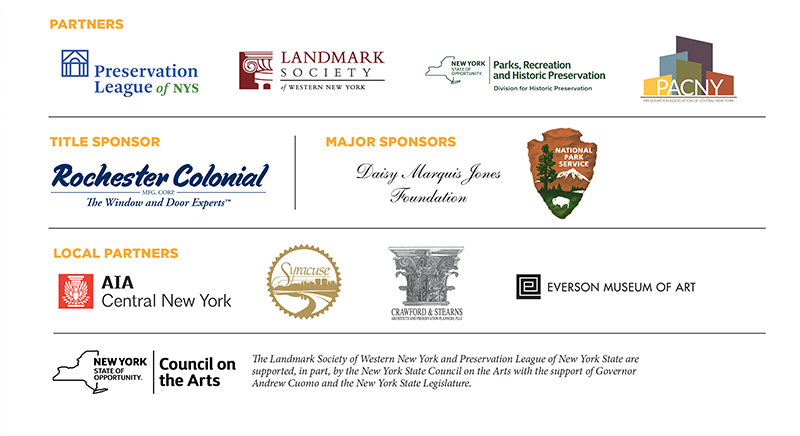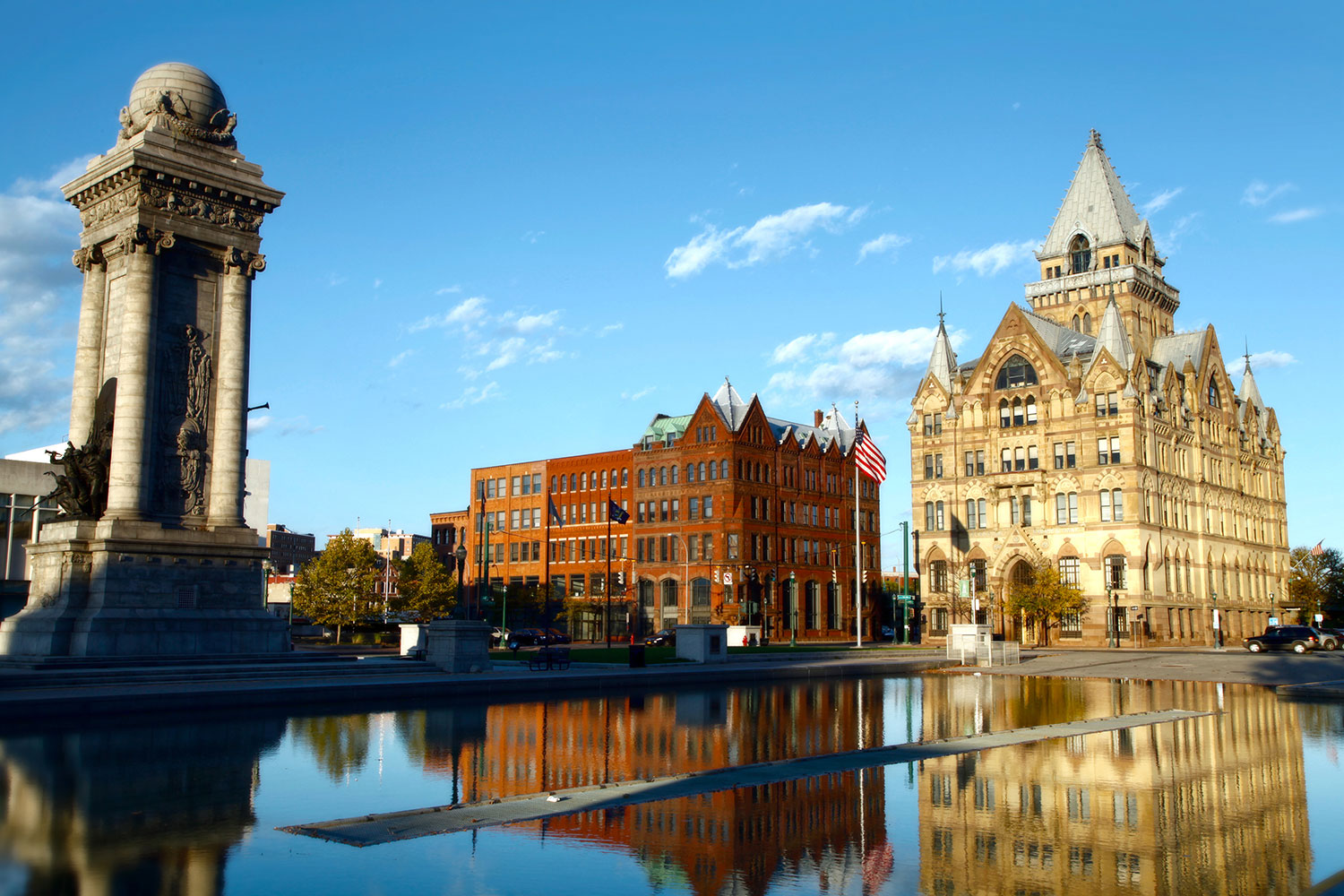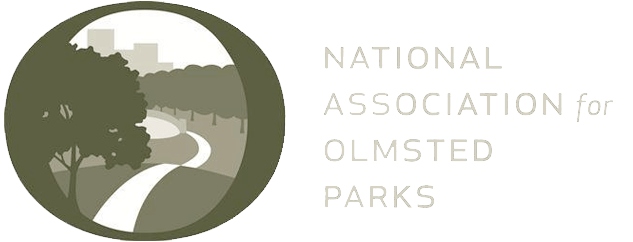2020 Sessions and Speakers
Tuesday, December 1st
Identifying and Tackling Implicit Bias in Preservation - Part 1
This panel discussion will be a two-part conversation regarding implicit biases that can be found in the preservation movement. The panel will offer examples and strategies that will help all of us tackle the issue thoughtfully. [1 LU; 1 CM]
PANELISTS
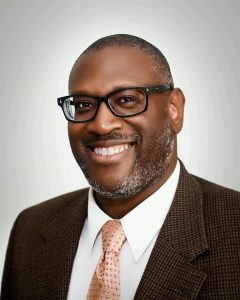 Jeffrey A. “Free” Harris is an independent historian and preservation consultant who works with historic preservation organizations, historic sites, non-profit organizations and academic institutions on preservation issues related to diversity and historic site interpretations. Free’s past clients include the National Park Service, Hanbury Preservation Consulting, the Raleigh Historic Development Commission, the Young Preservationists Association of Pittsburgh, Hampden-Sydney College and Americans Who Tell the Truth. Currently, Free is researching, and developing a database of, American music related historic sites.
Jeffrey A. “Free” Harris is an independent historian and preservation consultant who works with historic preservation organizations, historic sites, non-profit organizations and academic institutions on preservation issues related to diversity and historic site interpretations. Free’s past clients include the National Park Service, Hanbury Preservation Consulting, the Raleigh Historic Development Commission, the Young Preservationists Association of Pittsburgh, Hampden-Sydney College and Americans Who Tell the Truth. Currently, Free is researching, and developing a database of, American music related historic sites.
Free was the first Director for Diversity at the National Trust for Historic Preservation, and he completed his coursework and comprehensive examinations toward a PH.D in History at The American University. Free recently was appointed to Virginia’s Board of Historic Resources to a four-year term. He currently serves as the Board Chair of the Rainbow Heritage Network, a national organization that seeks to preserve historic sites related to the history of the LGBT community. He wrote the chapter “’Where We Could Be Ourselves’: African American LGBTQ Historic Places and Why They Matter” for the National Park Service’s LGBTQ Heritage Theme Study.
Free also has served on the Board of Trustees for the DC Preservation League, worked with the Virginia Department of Historic Resources to identify statewide LGBTQ historic places for potential designation, and served as an Adviser to the DC Chapter of the National Organization of Minority Architects.
Samuel Collins III has been providing financial services in the Galveston County community for over 20 years. He has a BBA in Accounting from Texas A&M University in College Station. He has worked at both a regional brokerage firm and a large wirehouse. In April 2012 he decided to open SLC Investment Services to better serve his clients.
Sam serves on several boards including: National Trust for Historic Preservation, The Bryan Museum Delegado, Rosenberg Library Trustee and the Ruby Bridges Foundation (National Board). Other boards that Sam has served on include Galveston Historical Foundation, Old Central Cultural Center, NIA Cultural Center, Galveston Chamber of Commerce, Galveston Economic Development Partnership, Texas Historical Commission State Board of Review & Texas A & M University Letterman’s association.
In 2015 Sam was awarded the Galveston County Citizen of the Year by the Galveston Daily Newspaper. In 2012 Sam was recognized as an Unsung Hero by the Galveston County Daily Newspaper.
Sam is married to his wife Doris. They have four children, two girls and two boys. Sam is active in his local church Greater St. Matthews Baptist Church where he serves as an associate minister under the leadership of Dr. William L Randall Jr. Sam and Doris have several philanthropic interests. They mainly support their local church and youth in the Galveston County area.
Sam’s favorite quote is “Give a man a fish, feed him for a day. Teach a man to fish, feed him for a lifetime”.
Melissa Jest joined the Georgia Historic Preservation Division in July 2016 as the African American Program Coordinator. She also serves as liaison to the Georgia African American Preservation Network (GAAHPN). In her role, Miss Jest assists individuals and communities in identifying and preserving African American sites and properties significant to Georgia’s heritage. She also coordinates the production of the Reflections quarterly newsletter, and develops other outreach strategies to initiate, promote and increase engagement in historic preservation activities and programs in communities across the state. Miss Jests brings 15 years of outreach experience, having worked in Savannah, GA, Philadelphia, PA and with a national-level program at the National Trust for Historic Preservation in Washington DC. She holds a Bachelor’s degree in Broadcast Journalism from the University of Florida and a Masters in Urban Studies from Savannah State University.
Franklin Vagnone is a Public Historian who leads the highly respected international cultural consulting firm Twisted Preservation. 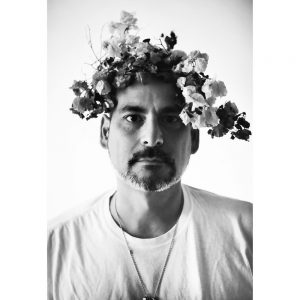 Prior to his current practice, Frank was Director of the Historic House Trust of the City of New York, and prior to that was Executive Director of The Philadelphia Society for the Preservation of Landmarks. He is the co-author of the best-selling museum-related book, The Anarchist’s Guide to Historic House Museums (with ProfessorDeborah Ryan). His work has been recognized through numerous awards, and most recently Franklin was selected as the 2019 American Institute of Architects Advocacy Award Recipient and the Museum Association of New York (MANY) state’s prestigious Individual Achievement Award (2016). Mr. Vagnone’s blog “One-night Stands: Sleeping Around in Historic House Museums” is read in over 90 countries. His professional practice concentrates on how museums & cultural sites are finding themselves at the center of social & environmental shifts while struggling to find a unique voice within the field of Public History and Preservation.
Prior to his current practice, Frank was Director of the Historic House Trust of the City of New York, and prior to that was Executive Director of The Philadelphia Society for the Preservation of Landmarks. He is the co-author of the best-selling museum-related book, The Anarchist’s Guide to Historic House Museums (with ProfessorDeborah Ryan). His work has been recognized through numerous awards, and most recently Franklin was selected as the 2019 American Institute of Architects Advocacy Award Recipient and the Museum Association of New York (MANY) state’s prestigious Individual Achievement Award (2016). Mr. Vagnone’s blog “One-night Stands: Sleeping Around in Historic House Museums” is read in over 90 countries. His professional practice concentrates on how museums & cultural sites are finding themselves at the center of social & environmental shifts while struggling to find a unique voice within the field of Public History and Preservation.
1A | Lead Paint: What You Need to Know Before Your Next Project
Your knowledge of lead steers your projects “attitude”. Kevin will discuss the characteristics that made lead an excellent material for construction products and where it was used, what you are doing that makes it dangerous, describe the health effects of lead exposure, how to minimize exposure, review how to interpret lead surveys, and help distinguish which regulations apply to various projects. Kevin will include a few brief case studies including Flint, Michigan and NYSED lead testing mandate. After this presentation, your attitude toward lead WILL change. [1.5 LU; 1.25 CM]
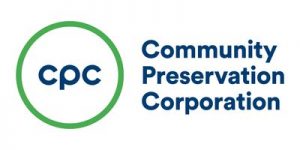
Speakers
Kevin Hutton is with Rochester Colonial Manufacturing Corp. and Heartwood Fine Windows and Doors. He is energetic and passionate about sharing his knowledge of lead rules and regulations to keep you safe. He is an EPA authorized Lead RRP trainer. He relates 30 plus years of construction experience while training A&E’s to abatement workers. He has been the regular presenter to environmental experts at the Professional Abatement Contractors of New York (PACNY) Annual conference. Kevin holds a Bachelor and Master degree in Construction Management from SUNY ESF.
1B | Building & Restoring Communities through Real Estate Impact Investing
Around the country, previously vibrant communities have fallen into disrepair and neglect. Beautiful buildings that once shone as stalwarts in a community are merely shadows of their former glory. Housing Joint Venture is leveraging historic preservation as a key tool to renovate historic buildings and repurpose them for new, modern uses that allow them to serve as dynamic epicenters once again. This talk will highlight the revitalization plans for the Holy Rosary Campus in Central Ohio. [1.5 LU; 1.25 CM]
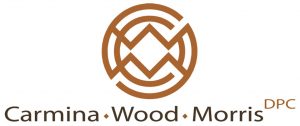
Speakers
John Delia is a prolific real estate investor, entrepreneur and author. He specializes in repositioning value-added properties in inner cities across the American Midwest. An expert deal maker and strategist, he began his career in real estate at age 18. He is the author of Life, Liberty n’ Property: A Guide to Successful Real Estate Investing. John actively manages a portfolio that houses residents from 4 continents and is valued in excess of $1.5 million. He resides in Columbus, Ohio, with his wife Richelle and their miniature Goldendoodle puppy.
2A | Boots on the Ground and in the Cloud: CRIS Trekker 2.0 Mobile Survey App
The State Historic Preservation Office recently launched its new CRIS Trekker 2.0 Mobile Survey Application, a cloud-based system for capturing descriptive and spatial information on historic resources in the field with editing capabilities in the office. Join SHPO staff members Kathy Howe and Chelsea Towers for an introduction to this powerful new survey tool for large-scale reconnaissance and intensive surveys, annotated building lists for National Register historic district nominations, and crowd-sourced building inventories. Participants will learn about this free application and its related components: CRIS Public, CRIS Mobile Pro, Survey123, CRIS Submit, and Manager. For use on most Android and iOS devices Trekker offers ease of data entry, whether in the field or the office, and exporting of survey data. [1.5 LU; 1.25 CM]

Speakers
Kathy Howe is the Survey and Evaluation Coordinator at the Office of Parks, Recreation and Historic Preservation, Division for Historic Preservation. She holds a M.A. in Architectural History and Certificate in Historic Preservation from the University of Virginia. Prior to coming to work for the SHPO she worked at Bero Architecture in Rochester and in the planning unit of the Peak National Park in the United Kingdom as part of the International Council on Monuments and Sites. As head of the Survey Unit, Ms. Howe assists communities and agencies with surveys that identify and evaluate historic districts, buildings, sites, structures and objects worthy of protection and consideration in community planning efforts.
Chelsea Towers works as a Historic Preservation Program Analyst in the Survey and Evaluation Unit at the New York State Office of Parks, Recreation and Historic Preservation. She holds undergraduate degrees in Architectural Studies and Mathematics, and a Masters in Historic Preservation from Roger Williams University. Ms. Towers currently manages the largescale Hurricane Sandy Survey which is working to document select waterfront communities in New York City and adjacent communities threatened by hurricane flooding.
2B | Preserving the Full Story: A More Inclusive Approach to Survey
With less than 8% of listings in the National Register of Historic Places representing places connected to communities of color, we know that historic preservation has failed to tell the stories of all Americans. Most of us agree that we need to do a better job. What preservation professionals seem less sure of is how to accomplish improved representation in the documentation and designation of historic places. Bedrock preservation programs and tools such as the National Register and historic resource surveys were designed in the 1960s. Over the years, we have adapted these tools to be more inclusive but there remains much room for improvement. In this session, we will explore two different approaches to survey and documentation in the cities of Buffalo and Rochester. In order to expand our thinking about eligible places and landscapes, Preservation Buffalo Niagara is working with SHPO to create an East Side Context Study, that will concentrate on studying 20th century history, focusing especially on the Great Migration, Post World War II neighborhood change, and Urban Renewal. In Rochester, The Landmark Society of WNY and Bero Architecture, PLLC are working with the City to complete the final phase of a five-year comprehensive survey update of the entire city. As we entered the final phase, which included city neighborhoods with the highest levels of poverty and most likely the lowest levels of what we traditionally define as historic integrity, we realized we needed to take a step back and adjust our methodology to ensure that we were telling the full story of these neighborhoods and the people who have inhabited them. [1.5 LU; 1.25 CM]

Speakers
Jessie Fisher is the Executive Director of Preservation Buffalo Niagara. An urban planner with a Master’s degree from the University of Washington in Seattle, Jessie has worked as an historic preservation and neighborhood planning consultant, owned and developed at-risk and abandoned buildings, and served as the Director of Planning at Buffalo Niagara Riverkeeper. These experiences have combined to give her a unique sense of how promoting our region’s heritage can unlock a brighter, more equitable, more sustainable future.
Katie Eggers Comeau is the architectural historian at Bero Architecture, PLLC. She has over 20 years’ experience in the historic preservation field, having started her career in Washington, D.C. before moving home to Rochester in 2001. With current projects ranging from Jamestown to the Thousand Islands, she enjoys discovering the tremendous variety of historic resources that make up New York state. Katie is also a member of the Board of Trustees of the National Association for Olmsted Parks and of the Landmark Society’s Five to Revive committee.
Caitlin Meives is the Director of Preservation at The Landmark Society of Western New York, a regional not-for-profit historic preservation organization based in Rochester and serving a nine-county area in western New York. Caitlin holds a M.S. in historic preservation from the University of Vermont and B.A. in history and Spanish from the University of Rochester. Prior to her employment at The Landmark Society in 2010, she served as the Survey Coordinator at the Kansas State Historic Preservation Office. In her position at The Landmark Society, Caitlin works directly with municipal officials, developers, neighborhood and community advocates, and property owners of all types to assist in the rehabilitation and revitalization of historic buildings, structures, landscapes, and communities. She is also the co-founder and President of The Landmark Society’s Young Urban Preservationists.
3A | Renewable Energy and Historic Preservation: Impacts and Opportunities
New York State policies and incentives are currently driving renewable energy development on an unprecedented scale throughout the state. Many renewable energy projects have been built or are being proposed in rural areas, where historical organizations and/or stewards of historic properties face financial challenges and/or limited support. A perhaps unexpected and misunderstood aspect of environmental permitting and review for energy projects is the potential for offset funding for cultural resources mitigation, which typically include direct benefits to local historic properties and/or historical organizations. This type of mitigation is providing an important source of funding for preservation/stewardship of historic resources in economically challenged rural areas. This panel discussion will describe the process and examples of cultural resources mitigation projects related to renewable energy projects in New York State. [1.5 LU; 1.25 CM]
Brine Wells Development, LLC
Marriott Syracuse Downtown
Session 3A Sponsors
Speakers
Patrick Heaton is a Principal and the Director of Cultural Resources at EDR. He is a Registered Professional Archaeologist (RPA) with more than 20 years of experience managing cultural resources compliance, environmental permitting, and historic preservation projects. As Director of Cultural Resources, Patrick manages EDR’s services for archaeological investigations, historic preservation planning projects, and develops avoidance and/or mitigation strategies for archaeological sites and historic properties. He has significant experience with transportation, energy transmission, and utility-scale renewable energy (wind and solar) projects. Patrick currently serves on the Board of Directors for the Onondaga Historical Association and New York Archaeological Council.
John A. Bonafide is the Director of the Technical Preservation Services Bureau at the New York State Division for Historic Preservation. He manages the Division’s Architectural Technical Review and Archaeological programs, oversees the Bureau’s federal and state compliance responsibilities as the New York State Historic Preservation Office (SHPO) and is responsible for the ongoing development and implementation of the Division’s web-based information systems. John holds a Masters degree in Public History from the New York State University at Albany. He is also an Adjunct Professor in the Public History Graduate Program at the University at Albany.
Jennifer Ahrens is the co-owner of Bero Architecture PLLC, a full-service architectural firm in Rochester, New York specializing in rehabilitation of existing buildings. Jennifer has over 20 years of experience working with historic buildings, including detailed investigations of historic structures, preparation of design studies and estimates, and preparation of drawings and specifications for preservation and rehabilitation projects.
Susan Lawson is a Historic Preservation Project Manager with EDR. She holds a Master of Arts degree in Historic Preservation Planning from Cornell University, and a Bachelor of Science in Architecture from the University of Virginia. Ms. Lawson has 20 years of experience working on historic preservation projects including historic building rehabilitation, administration of the historic rehabilitation tax credit application, existing conditions assessments, preservation planning, cultural resource surveys, Historic American Building Survey/Historic American Engineering Record (HABS/HAER) documentation, historic structure reports, and cultural resources mitigation planning for energy projects. Ms. Lawson is a licensed architect and LEED accredited professional.
3B | Resilience and Disaster Planning for Historic Communities
Sponsored by the National Alliance of Preservation Commissions, this presentation provides an overview on resilience and disaster planning for historic communities. Topics include case studies in resilience planning, disaster types and terminology, the shared purpose of preservation and emergency management, resources for disaster preparedness, materials and methods for adaptation, funding for resilience and disaster planning and the role of historic preservation commissions and nonprofits in creating more resilient communities.
NOTE: This session replaces the originally scheduled session, Activating History: Preservation at Native American Sites

Speakers
Lisa Craig serves as Principal for The Craig Group, LLC. In this role she leads a team of design and planning professionals to support community leaders, local government and nonprofit organizations ingrowing the economic value and protecting the architectural and cultural integrity of historic communities. Her experience in historic preservation, community engagement and resiliency planning has made her a popular speaker and trainer. Previous to starting her own firm, Ms. Craig served for seven years as Chief of Historic Preservation for the City of Annapolis.
She led historic research, design, commission training, legislation and procedures drafting, grant writing, community engagement, and production of educational materials and programs for the City. She spearheaded the Weather It Together initiative, a Cultural Resource Hazard Mitigation Plan identified by the National Trust for Historic Preservation as a national model for resiliency planning. Previous to her work in Annapolis, Ms. Craig worked as project executive with Forest City Military Communities, Washington, DC leading property development activities for the $82 million housing privatization project at the United States Air Force Academy.
As well, she provided technical assistance on design, development, maintenance, Section 106 and historic tax credit activities for more than 350 historic properties within the Company’s historic property portfolio. Ms. Craig’s background also includes contract consulting to Lord Cultural Resources Planning & Management on historic preservation, cultural tourism and corridor planning projects; serving as State Historic Preservation Officer for the District of Columbia; and working for the National Trust for Historic Preservation as the head of the Southern Field Office and Director of Preservation Partnerships. Ms. Craig has published numerous articles and presented dozens of public talks on topics ranging from planning for the impacts of climate change on historic properties, to historic military housing to conservation districts. Ms. Craig graduated summa cum laude with a Bachelor of Fine Arts in Historic Preservation from the Savannah College of Art & Design and went on for Master’s work at the University of Oregon in Historic Preservation. Nationally, she serves as Chair of the Cultural Heritage and Climate Change Committee on the Board of the US International Committee on Monuments and Sites.
4A | Rendering History: Digital Modeling and Visualization of Heritage Landscapes: Statue of Liberty National Monument
This research investigates the use of digital 3D modeling and interpretive visualization to create realistic visualizations of a historic project’s changes over time. The project site for this research is Liberty Island, of the Statue of Liberty National Monument in New York City. Using a vast archive of historic maps, drawings, and photographs, researchers reconstructed 3D models of Liberty Island at six points in history, beginning with a model of the island as it appeared in 1840 and concluding with a contemporary model of the island in 2019. The process of creating these visualizations provided a novel framework for archival research. Visualizations were created from these 3D reconstructions, including photorealistic renderings, flythrough animations, and virtual reality tours of the island’s history. The graphic products created through this research allow the public to engage with the island’s history in new and unique ways. [1.5 LU; 1.25 CM]

Speakers
Aidan Ackerman is an Assistant Professor at SUNY-ESF in the Department of Landscape Architecture, where his work focuses on the agency of digital tools in landscape architecture analysis and design, specifically the simulation and visualization of natural phenomena. Using 3D modeling, parametric and algorithmic modeling, rendering, animation, GIS, BIM, and digital fabrication, he investigates landscape histories as well as their futures.
Anna Tiburzi is a Master of Landscape Architecture candidate at the State University of New York (SUNY) College of Environmental Science and Forestry. She holds a Bachelor of Arts in Geography from SUNY Geneseo which forms the foundation for her interest in further understanding the spatial, ecological, and cultural relationships at play between communities and the landscapes they share.
Meaghan Keefe is a 3rd Year Master of Landscape Architecture student at SUNY ESF. She holds a Bachelor of Science in Environmental Biology from Georgetown University and worked for three years at the USGS New York Water Science Center before beginning graduate school. Her interests lie in designing adaptive human and ecological systems and better understanding resiliency and landscape performance in the face of climate change.
4B | Cultural Equity: African American Sites in the Hamptons, Still in Need of Preservation
African American contributions, as well as other minority communities, have long remained under-examined. Traditionally, historic preservation efforts have targeted architecturally significant properties and mainly ignored those with cultural associations, especially those linked to marginalized communities. The historic fabric and the many significant contributions that African Americans have made in the economic and cultural sectors, as well as to the built environment are hidden in plain sight. This session will focus on challenges that these sites on Long Island, in particular, the Southampton African American Museum (SAAM), Pyrrhus Concer Homestead (PCHS), Sag Harbor Hills, Azurest, Ninevah and Subdivisions (SANS’) have to navigate. These sites of distinction yield significant histories and are worthy of memory and preservation. Realtime examples of doing the work and lessons learned, will be shared and how preservation is ongoing. [1.5 LU; 1.25 CM]
Brine Wells Development, LLC
Marriott Syracuse Downtown
Session 4B Sponsors
Speakers
Dr. Georgette Grier-Key is the Executive Director of Eastville Community Historical Society. Georgette is a National Trust for Historic Preservation Diversity Scholar and an Arcus Fellow. Ms. Grier-Key is the President of the Long Island Historical Societies, under her leadership the organization has expanded its geographic territory from Montauk to Brooklyn. As a founding member and lead organizer of the Pyrrhus Concer Action Committee her continued work led to the purchasing of the Concer home lot. She has worked on preserving various historic structures on Long Island, such as the Fowler House with East Hampton Town. Sag Harbor Hills, Azurest, Ninevah and Subdivisions (SANS) in Sag Harbor recently achieved national and state historic designations to which she served as the lead advisor.
Renee V. H. Simons is President of SANS Sag Harbor, a not for profit organization pursuing National and State recognition of SANS as a Historical District founded and developed by African Americans in the Post WWII and Jim Crow eras. She is also very engaged in community activism to make a difference today and for all future generations in America and the world. She is President of The Harley Simons Group, Inc., a Marketing and Communications consulting company and is an Adjunct Professor at Mercy College’s School of Business. Ms. Simons has a wealth of senior level business experience managing billion dollar brands and has directed marketing efforts across several marketing categories including beverages, paper products, technology and financial industries.
Brenda Simmons is the executive director of the Southampton African American Museum, and the producer/host of her own TV show on LTV called VOW-Voices of Wisdom which explores “REAL” lationships, and topics that are educational, informative, and sometime controversial. For 11 years Ms. Simmons served as the Assistant to the Mayor in the Village of Southampton, and was a past counselor at Southampton College with the Higher Education Opportunity Program –HEOP. She received her bachelor’s degree in Community and Human Services, with a concentration on Family Advocacy from SUNY Empire State University, and received the Chancellor’s Award for Student Excellence. Additionally Brenda has a degree in Computer Information Systems as well as completing an Entrepreneurial Assistance Program/with Distinction from Suffolk County Community College.
The System Racism of Preservation in Santa Fe
Shawn Evans, AIA | Principal, Atkin Olshin Schade Architects
Democratizing Tools for Preservation
Darren Cotton | President and Founder, The Tool Library
San José Cemetery: (Re)Claiming Buried Memories
Diana M. Hernández
Global Climate Change, Data Collection, & The Impact on Historic Preservation
Clive Copping, RIBA, Tracy D. Marcotte, PhD, PE, FACI, Monica Ortiz-Cortes
Tell the Full Story: a meditation on the retelling of history
Krista Kennedy Whiters, AIA
An inter-generational Willowbank Campus Commons, Queenston, Ontario
Craig Crane | Managing Director, Willowbank
Regulation Crowdfunding: Community Owned Development
Derek King | Director of Operations, Common Owner
Preservation through Puppetry: A Sea Serpent Puppet Parade
Josh Rice
Wednesday, December 2nd
Identifying and Tackling Implicit Bias in Preservation - Part 2
This panel discussion will be a two-part conversation regarding implicit biases that can be found in the preservation movement. The panel will offer examples and strategies that will help all of us tackle the issue thoughtfully. [1.5 LU; 1 CM]
PANELISTS
 Jeffrey A. “Free” Harris is an independent historian and preservation consultant who works with historic preservation organizations, historic sites, non-profit organizations and academic institutions on preservation issues related to diversity and historic site interpretations. Free’s past clients include the National Park Service, Hanbury Preservation Consulting, the Raleigh Historic Development Commission, the Young Preservationists Association of Pittsburgh, Hampden-Sydney College and Americans Who Tell the Truth. Currently, Free is researching, and developing a database of, American music related historic sites.
Jeffrey A. “Free” Harris is an independent historian and preservation consultant who works with historic preservation organizations, historic sites, non-profit organizations and academic institutions on preservation issues related to diversity and historic site interpretations. Free’s past clients include the National Park Service, Hanbury Preservation Consulting, the Raleigh Historic Development Commission, the Young Preservationists Association of Pittsburgh, Hampden-Sydney College and Americans Who Tell the Truth. Currently, Free is researching, and developing a database of, American music related historic sites.
Free was the first Director for Diversity at the National Trust for Historic Preservation, and he completed his coursework and comprehensive examinations toward a PH.D in History at The American University. Free recently was appointed to Virginia’s Board of Historic Resources to a four-year term. He currently serves as the Board Chair of the Rainbow Heritage Network, a national organization that seeks to preserve historic sites related to the history of the LGBT community. He wrote the chapter “’Where We Could Be Ourselves’: African American LGBTQ Historic Places and Why They Matter” for the National Park Service’s LGBTQ Heritage Theme Study.
Free also has served on the Board of Trustees for the DC Preservation League, worked with the Virginia Department of Historic Resources to identify statewide LGBTQ historic places for potential designation, and served as an Adviser to the DC Chapter of the National Organization of Minority Architects.
Samuel Collins III has been providing financial services in the Galveston County community for over 20 years. He has a BBA in Accounting from Texas A&M University in College Station. He has worked at both a regional brokerage firm and a large wirehouse. In April 2012 he decided to open SLC Investment Services to better serve his clients.
Sam serves on several boards including: National Trust for Historic Preservation, The Bryan Museum Delegado, Rosenberg Library Trustee and the Ruby Bridges Foundation (National Board). Other boards that Sam has served on include Galveston Historical Foundation, Old Central Cultural Center, NIA Cultural Center, Galveston Chamber of Commerce, Galveston Economic Development Partnership, Texas Historical Commission State Board of Review & Texas A & M University Letterman’s association.
In 2015 Sam was awarded the Galveston County Citizen of the Year by the Galveston Daily Newspaper. In 2012 Sam was recognized as an Unsung Hero by the Galveston County Daily Newspaper.
Sam is married to his wife Doris. They have four children, two girls and two boys. Sam is active in his local church Greater St. Matthews Baptist Church where he serves as an associate minister under the leadership of Dr. William L Randall Jr. Sam and Doris have several philanthropic interests. They mainly support their local church and youth in the Galveston County area.
Sam’s favorite quote is “Give a man a fish, feed him for a day. Teach a man to fish, feed him for a lifetime”.
Melissa Jest joined the Georgia Historic Preservation Division in July 2016 as the African American Program Coordinator. She also serves as liaison to the Georgia African American Preservation Network (GAAHPN). In her role, Miss Jest assists individuals and communities in identifying and preserving African American sites and properties significant to Georgia’s heritage. She also coordinates the production of the Reflections quarterly newsletter, and develops other outreach strategies to initiate, promote and increase engagement in historic preservation activities and programs in communities across the state. Miss Jests brings 15 years of outreach experience, having worked in Savannah, GA, Philadelphia, PA and with a national-level program at the National Trust for Historic Preservation in Washington DC. She holds a Bachelor’s degree in Broadcast Journalism from the University of Florida and a Masters in Urban Studies from Savannah State University.
Franklin Vagnone is a Public Historian who leads the highly respected international cultural consulting firm Twisted Preservation.  Prior to his current practice, Frank was Director of the Historic House Trust of the City of New York, and prior to that was Executive Director of The Philadelphia Society for the Preservation of Landmarks. He is the co-author of the best-selling museum-related book, The Anarchist’s Guide to Historic House Museums (with ProfessorDeborah Ryan). His work has been recognized through numerous awards, and most recently Franklin was selected as the 2019 American Institute of Architects Advocacy Award Recipient and the Museum Association of New York (MANY) state’s prestigious Individual Achievement Award (2016). Mr. Vagnone’s blog “One-night Stands: Sleeping Around in Historic House Museums” is read in over 90 countries. His professional practice concentrates on how museums & cultural sites are finding themselves at the center of social & environmental shifts while struggling to find a unique voice within the field of Public History and Preservation.
Prior to his current practice, Frank was Director of the Historic House Trust of the City of New York, and prior to that was Executive Director of The Philadelphia Society for the Preservation of Landmarks. He is the co-author of the best-selling museum-related book, The Anarchist’s Guide to Historic House Museums (with ProfessorDeborah Ryan). His work has been recognized through numerous awards, and most recently Franklin was selected as the 2019 American Institute of Architects Advocacy Award Recipient and the Museum Association of New York (MANY) state’s prestigious Individual Achievement Award (2016). Mr. Vagnone’s blog “One-night Stands: Sleeping Around in Historic House Museums” is read in over 90 countries. His professional practice concentrates on how museums & cultural sites are finding themselves at the center of social & environmental shifts while struggling to find a unique voice within the field of Public History and Preservation.
1C | From Grassroots Preservation to Neighborhood Revitalization: The Crandall and North Streets Model
When two preservationists set out to save a single historic house in Binghamton, they never expected that their efforts would initiate the revitalization of an entire neighborhood. In 2015, the demolition of the Sturtevant House, located in Binghamton’s distressed North of Main Street (NoMa) neighborhood, appeared all but certain. Addressing preservationist concerns, the City, partnering with local not-for-profit affordable housing developer, the First Ward Action Council, Inc., secured local, County, and State funding to rehabilitate the Sturtevant House as well as ten other residential dwellings on a nearby street. With the rehabilitations complete, this session will illustrate how the effort to save a single historic house led to the revitalization of an entire street in the same neighborhood. The session will also demonstrate the manner by which the City is evaluating the effects of the rehabilitations upon the neighborhood. [1.5 LU; 1.25 CM]
Brine Wells Development, LLC
Marriott Syracuse Downtown
Session 1C Sponsors
Speakers
Sean McGee serves as the Historic Preservation & Neighborhood Planner for the City of Binghamton and as the Deputy Broome County Historian. He administers the work plan for the City’s historic preservation program, including, regulatory, planning, educational, and training functions. Sean provides technical assistance and administrative support to the City’s Landmarks Preservation Commission, the Commission on Architecture and Urban Design (CAUD). He received his Master’s degree from the College of Architecture, Art, and Planning in Historic Preservation Planning (HPP) at Cornell University. Sean also holds a Bachelor of Science degree in the History of Architecture and Urban Development from the College of Architecture, Art, and Planning at Cornell University.
Jonathan Westgate serves as the Vacant Property Officer for the City of Binghamton. He has more than four years of code enforcement experience within two City of Binghamton departments. As the Vacant Property Officer, he oversees the registration and maintenance of vacant buildings within the City’s limits. Jonathan holds an Associate’s degree in Civil Engineering from Broome Community College and a Bachelor’s degree in Business Management from the University of Phoenix. He has also served in the Army as a Combat Engineer with two overseas deployments to combat zones with the 10th Mountain Division 1st Brigade Special Troops Battalion conducting training of locals, route reconnaissance, and route clearance.
Obed Varughese serves as a Planner for the City of Binghamton. In this position he provides technical assistance and support to both the City’s Planning Commission and the Zoning Board of Appeals. He previously worked as an Economic Development Specialist for the City of Binghamton’s Office of Economic Development where he oversaw the completion of a $1.6 million dollar FEMA grant which turned flood prone properties into an urban farm. He specializes in building sustainable communities through resiliency to natural hazards and place making. Obed is a SUNY ESF graduate with a degree in Environmental Science and holds a Master’s degree in Public Administration from Binghamton University.
Richard C. David is the 50th mayor of the City of Binghamton. Born in Pittsford, New York, David moved to Binghamton in 1998 to work as a reporter for local TV news station WBNG. He became interested in public service while covering local politics, and in 2000, he left the TV station for a job as Binghamton City Hall’s Director of Community Relations under then-mayor Richard A. Bucci. David was appointed Deputy Mayor by Bucci four years later. In 2013, David was elected Mayor of Binghamton and is now serving his second term. He continues to focus on improving the City’s infrastructure, revitalizing its neighborhoods, bolstering public safety and cutting taxes. David is the 1st Vice President of the New York Conference of Mayors.
Mary Webster is an advocate for her community and a preservation enthusiast. For more than twenty years she has played a leading role in Safe Streets, a volunteer organization in Binghamton, New York, dedicated to improving the quality of life in her neighborhood. She holds a Master’s degree in Art History and a MFA in Creative Writing. She lives with her dog and cat in a well-preserved 1892 Queen Anne style house, of which she is only the second owner.
Rosemary Markoff has lived with her husband for 48 years in a neighborhood filled with historic houses. They have called one, which was built around 1918, home. Its original owner was a New York State Senator, Martin Deyo. Having raised her two children in the neighborhood, she continues to work to preserve its character whenever possible. She was very instrumental in saving 47 North Street from demolition and is thrilled the house is again a home for many. Rosemary holds a Master’s degree in Accounting from Binghamton University and is the Treasurer of Safe Streets.
Jerry Willard is the Executive Director of the First Ward Action Council, Inc., a Neighborhood Preservation Program in Binghamton. During his tenure, this not-for-profit organization has evolved into a significant developer and provider of affordable housing in the Binghamton area, utilizing low-income housing tax credits and other state and local funding sources. Many of the organization’s projects have been historic preservation projects by nature, with several utilizing historic tax credits. Its New Dwightsville project received an award from the Preservation League of New York State in 2001. The recently completed Crandall/North project rehabbed clusters of deteriorated old homes, totally transforming the neighborhood.
1D | Leaders In the Culture: Innovative Artists, Preservationists and Activists Demanding Better
Artists, Historians, and Community Activators from across the state will join together to talk about the need for funding and respect for DIY community projects- and how the preservation movement can help the cause, and help themselves. [1.5 LU; 1.25 CM]

Speakers
Melanie Eversley is a veteran journalist based in New York City. She was a reporter with USA Today for 13 years and before that, covered Washington for the Detroit Free Press and the Atlanta Journal-Constitution. She is founder of Beyond the Railroad, a news organization presenting untold stories of people of color in New York State and more.
Michael John Heagerty Ambassador, Entrepreneur, Place-maker, Experience Creator I tend to look through the lens of exploration, being drawn to overlooked or under-utilized urban pockets that can be re-imagined. Celebrating the anti-ordinary, envisioning the long-term effects on the social community and locational identity of forgotten spaces is my specialty.
Christa Heyward brings experience engaging communities in both urban and rural communities. She has created cultural and STEM programing for K-12 students, graduate students, and members of the broader community. With the Arts Council of the Southern Finger Lakes, she is collecting and highlighting the lives of older members of the Black community in Elmira. She will share insights and perspective from her experience starting a new cultural organization in Elmira, NY.
Dana Saylor is building a place for community changemakers, aspiring and established, to collaborate, converse and learn at https://www.facebook.com/groups/diywithdana/ She helps people and organizations working to launch creative community projects ensure their funding, relevance and sustainability. She is an artist, historian, event planner and connector. She’s the co-creator of the CITY of NIGHT art festival at Buffalo’s grain elevators, founder of Urban Sketchers Buffalo, and an Advisor to the National Trust for Historic Preservation.
2C | Promoting and Preserving Place: Hands and Heads in Historic House Rehabilitation
[1.5 LU; 1.25 CM]

The Howland Stone Store Museum firmly believes that “preservation of place” is a uniting force in rural upstate New York. We have operated a small rural museum in an 1837 cobblestone store since 1996, focusing on the stories of abolition, women’s rights, and education. We took the opportunity to acquire the nearby derelict Isabel Howland House known as “Opendore”. With State Parks funding and the dedication of over 5,000 hours of volunteer labor, we are transforming this house into a community resource with 3,600 square feet of museum support space. Presenters will discuss the restoration process, working with State Parks and professional consultants, managing contracts for labor and materials, and the complex nature of achieving the rehabilitation of this transformed facility.
If your home reflects who you are, no more perfect example exists than the Oneida Community Mansion House created by the 19th century utopian Perfectionist Oneida Community. Built between 1862 and 1878, this 90,000 square foot, mixed-use, multi-tenant National Historic Landmark needs continuous work to keep it perfect for its next 150 years as a museum, residence, inn and cultural center. Hear from its new leadership and consultant team about the challenges and successes of caring for a utopia. [1.25 CM]
Speakers
CBCA founder Clinton Brown, FAIA, serves as a Commissioner of the Erie Canalway National Heritage Corridor Commission; a founding Board member of the Richardson Center Corporation that is renewing the former Buffalo Asylum that was designed by Richardson and Olmsted Asylum; and is a Board member of Willowbank School of Restoration Arts in Queenston ON, Canada. CBCA is a leader in renewing historic buildings and heritage places for the 21st century with historic preservation, architecture, grants and historic tax credits services.
Guy Garnsey is a retired Professional Engineer with a Masters Degree from Cornell University. Guy has over 40 years’ experience with Beardsley Design Associates Architects and Engineers as a Project Manager and Principal. Guy’s experience with Museums includes serving on the board of Seward House in Auburn as well as current tenure with Howland Stone Store Museum as President and Facility Chairman. He is currently leading the museum’s restoration of the historic Isabel Howland House “Opendore”. His personal capabilities as a carpenter and fine woodworker have played well into the hands-on aspect of the project.
Larry Bell is a graduate of Baldwin-Wallace College and Gordon-Conwell Seminary. A native of Broome County, he moved to Southern Cayuga in 1991 and pastored area churches for 23 years. He has studied archaeology and Near Eastern history at Cornell University and has written historical articles for Rodziny, Genoa-King Ferry Tribune and FamilySearch. He is currently on the HSSM Fundraising and Facilities Committees and is active as a volunteer in the Opendore restoration effort, having previously worked as a finish carpenter.
Christine Hall O’Neil, Central NY native, Cornell University graduate and former executive director of the Chittenango Landing Canal Boat Museum is the new Executive Director of the Oneida Community Mansion House.
CBCA Grants Manager Alma O’Connell Brown has assisted clients in raising more than $35 million for their historic preservation projects and has administered most of those grants.
James Trevvett, AIA is a licensed Architect with over 17 years of experience in building enclosure design and building science, roofing and waterproofing design, building façade design and forensic investigations. James presently acts as project manager or project architect for projects, including work with the NYS Office of General Services (OGS), State University Construction Fund, Hamilton College, Syracuse and Cornell Universities.
Ted Bartlett is a Senior Associate and the Senior Preservation Planner with the Syracuse based firm of Crawford & Stearns, Architects and Preservation Planners. He spent seven years as a Preservation Specialist and Director of Preservation Services for the Landmarks Society of Western New York in Rochester, NY before joining Crawford & Stearns in 1986. He has a BS from Cornell University and did graduate work in Historic Preservation at Middle Tennessee State University. Since 1994 he has been an Adjunct Instructor at Syracuse University where he developed and teaches a course on Historic Preservation in the School of Architecture.
2D | Aspirational Cities: The Good, Bad, and Ugly
Often Ithaca and Saratoga Springs are considered examples of communities with best preservation practices. This session will not only look at their preservation success stories enabled by local preservation ordinances, Certified Local Government standing, and vocal preservation organizations, but will also look at the challenges – unsuccessful designations, demolitions, and development pressures. Ongoing preservation successes are contingent upon consistently educating community leaders and stakeholders about the economic, social, and environmental value of preservation. Highlights of a recent economic impact study of Saratoga Springs will be presented, demonstrating the economic benefits of preserving historic resources in a small community. [1.5 LU; 1.25 CM]
Brine Wells Development, LLC
Marriott Syracuse Downtown
Session 2D Sponsors
Speakers
Bryan McCracken holds a masters degree in Historic Preservation Planning from Cornell University. He has worked in economic development and has witnessed the successful use of historic preservation to economically transform struggling downtowns. He currently works as the Historic Preservation Planner for the City of Ithaca, a community working to save its historic resources while facing considerable development pressures.
Susan Holland has 25 years of nonprofit management experience and since November 2017, has been the Executive Director at Historic Ithaca. From 2005 to 2017, she was the Executive Director at Historic Albany Foundation. She leads Historic Ithaca in advocacy action; preservation education; a salvage retail store, Significant Elements; and a jobs training program, Work Preserve. Under her leadership, the organization is an active partner in the newly built Tompkins Center for History and Culture, a new arts, heritage and cultural destination and will guide the restoration of the Cascadilla Boathouse, all in Ithaca. She is currently on the Tompkins County Historical Commission plus other boards in Ithaca. She has a Bachelor of Science in Communications from Cornell University.
Christine O’Malley is a preservationist and an architectural historian. She serves as the Preservation Services Coordinator for Historic Ithaca and assists property owners throughout Tompkins County. She has written several local, state and national register designations for properties in Ithaca and gives guided tours in her community. She is a former member of the Ithaca Landmarks Preservation Commission and is currently the 1st Vice-President of the Vernacular Architecture Forum. She has a Ph.D. in architectural history from the University of Virginia.
Katelin Olson is the co-founder and CEO of SFL Planning, a boutique planning firm based in Trumansburg, NY. Katelin has served on the Ithaca Landmarks Preservation Commission as the historic preservation specialist since 2013, and also chairs the Town of Ulysses Planning Board. Formerly the executive director of the Albion Main Street Alliance (2009-2014), Katelin specializes in using historic preservation strategies to support economic development and community revitalization goals. A graduate of Cornell University (M.A. Historic Preservation Planning, Ph.D. City and Regional Planning), Katelin also adjuncts in Cornell’s graduate program in Historic Preservation Planning.
Samantha Bosshart has been the Executive Director of the Saratoga Springs Preservation Foundation since 2008. Under her leadership, she has assisted the City of Saratoga Springs with updating their historic review ordinance, developing illustrated design guidelines, and adopting a vacant building register ordinance. She regularly advocates for best preservation practices before the land use boards and provides technical assistance to building owners. Prior to joining the Foundation, she worked at the Galveston Historical Foundation and Historic Albany Foundation. She completed her MA Historic Preservation coursework at Cornell University. She is currently serves on the board of the National Preservation Partners Network and as secretary of Adirondack Architectural Heritage.
3C | Heritage Tourism & Design in Upstate NY: Marketing Stickley, Roycroft, and Wright
New York State is rich with iconic resources relating to the lives and works of Frank Lloyd Wright, Gustav Stickley, & Elbert Hubbard. These multi-talented and influential artists forever changed the face of design in the early years of the 20th century. Representatives from four historic sites will introduce their facilities; discuss how each organization promotes tourism on both a micro neighborhood scale as well as on a macro national level; consider how tourists and tourism is evolving; what unique experiences our visitors are seeking; how to actively engage both the student and the seasoned traveler; and innovative ways to experience the Arts & Craft Movement and the Prairie Style ideology. Finally, the panelists will discuss how we can forge a dynamic partnership linking and promoting these masterpieces of early 20th century art, architecture, and design and advocate for a lasting legacy to these craftsmen. [1.5 LU; 1.25 CM]

Speakers
Beth Crawford is a Senior Associate with Crawford & Stearns, Architects and Preservation Planners PLLC of Syracuse and has been a Designer and Project Manager with the firm since 1983. She has participated in the preservation, rehabilitation, and adaptive use of hundreds of buildings across New York State. Ms. Crawford has participated as a team member on numerous historic building condition assessments and historic structure reports. Beth is currently directing the rehabilitation of the nationally significant Arts & Crafts period home of Gustav Stickley in Syracuse. Beth previously served fifteen years on the board of the Preservation Association of Central New York and is currently Vice-President of the Arts & Crafts Society of CNY.
Amy Shook Perez is Secretary of the Gustav Stickley House Foundation (GSHF) and member of the inaugural Board of Directors. She is a community volunteer and preservation advocate in the Syracuse, NY area. Ms. Perez was a museum educator specializing in historic house/historic site interpretation and volunteer management for over 15 years in Florida, Virginia and California. She has additional professional experience in business administration, operations support, and risk management. She holds degrees in anthropology and museum education including a master’s degree from George Washington University. As part of GSHF she has helped coordinate fundraising efforts and communications including use of social media.
Suzanne Badgley is the director of marketing at Frank Lloyd Wright’s Martin House, an organization dedicated to restoring, preserving, and interpreting Frank Lloyd Wright’s greatest early-career residential work—the Darwin D. Martin House, a National Historic Landmark and New York State Historic Site. The Martin House estate is comprised of six prairie-style buildings that occupy a 1.5-acre site in the historic Parkside neighborhood of Buffalo, NY. Ms. Badgley joined the Martin House team in 2019 and is responsible for leading the organization’s marketing and communication initiatives designed to support annual visitation and revenue goals. Prior to joining the Martin House team, Ms. Badgley recently held lead marketing roles at a mature technology start up working in the education sector and a private high school with a 160-year legacy.
Amanda Clifford, Director of The Stickley Museum in Fayetteville, NY, has a diverse background in arts administration, collections care and management, developing exhibitions, marketing and social media as well as managing an artist-in-residency program. Previous positions provided an opportunity to experience many areas of the country including Philadelphia, Houston, and Fairbanks, AK. Amanda earned a BA from Moravian College in Bethlehem, PA in Art History and Masters from Syracuse University in both Art History and Museum Studies. She currently serves as a board member of the Arts and Crafts Society of CNY. Amanda is a respected community ambassador for Stickley, participates in community festivals and welcomes inquiries about the history of the company and Museum.
Alan Nowicki, Roycroft Campus Program Director: Mr. Nowicki came to the Roycroft Campus in April of 2010 by way of PBS. He is responsible for all classes and programming on the Campus, including tours, instructors and workshops, the Roycroft art shows, the Roycroft Film Society and Book Club, and special events throughout the year. He also maintains the Campus website and online store, as well as the training and handling of volunteers and docents. He has 15 years of experience working in educational programming, professional development and community outreach. Mr. Nowicki has also been a teacher for more than 20 years, having taught in every grade level from Pre-K through college, specializing in art and history.
3D | Urban Renewal to Highway Removal: Paving the Way for Social Justice and Neighborhood Revitalization
During the 1960s, the cities of Syracuse and Rochester joined in the nation’s highway building boom with the construction of two new roadways designed to ease the flow of traffic to and from their respective downtowns. Despite protest, I-81 in Syracuse and the I-490 Inner Loop in Rochester were built through densely populated, minority neighborhoods, bifurcating each community and causing the physical, social, and economic dislocation of the people left behind. With the highways now at the end of their operational lives, the New York State Department of Transportation (NYSDOT) is planning for the redesign of the roadways. This presents exciting redevelopment opportunities for both Syracuse and Rochester, but where will it leave the neighborhoods that have lived in the shadow of the roadways over the past 50 years? This panel session will explore the history and impact of highway development on Syracuse’s Southside and southeast corridor neighborhoods and Rochester’s South Marketview Heights and Grove Place neighborhoods, and describe the current grassroots efforts to engage residents, NYSDOT, and city planners in conversations about restorative justice, neighborhood reconnection, and shared community revitalization. [1.5 LU; 1.25 CM]

Speakers
Kate Elliot Auwaerter has over 20 years experience working in historic preservation and planning-related fields in the private, non-profit, and public sectors. Her work experience includes positions at the Ohio Historic Preservation Office, the New York Main Street Alliance, the Downtown Committee of Syracuse and the SUNY-ESF Center for Community Design Research. As Preservation Planner for the City of Syracuse, Kate oversees and advocates for the implementation of the City’s preservation program; advises other City departments on historic preservation-related matters; provides professional staff assistance to the Syracuse Landmark Preservation Board and administers the City’s Certified Local Government program. Kate has a degree in Historic Preservation Planning from Cornell University.
Lanessa L. Chaplin, Esq. is currently Project Counsel for the New York Civil Liberties Union. Immediately prior to joining NYCLU she was lead attorney for the Volunteer Lawyers Project, where she defended formerly incarcerated individuals from employment discrimination. She began her legal career in 2012 at Hiscock Legal Aide’s Appellate division where she drafted appeals on behalf of inmates to right the wrongs of the lower courts. Her work with the incarcerated population sparked her interest in public policies. Lanessa served as Legal Counsel to Assembly member Sam Roberts and went on to serve as the Deputy Secretary to the Speaker of the New York State Assembly, working closely on anti-poverty initiatives, and criminal justice reform. Lanessa is the proud recipient of 2017 New York State Bar Associations Young Lawyer Award, and 2018 40 under 40 Honoree. Most notably, she is the Founder and Executive Director of the William Herbert Johnson Bar Association of Central New York, the only minority bar association in the region. Lanessa is a native of Syracuse NY and a proud Henninger Black Knight.
Ryedell Davis, a native of Syracuse and small business owner. Ryedell is a graduate of Syracuse University with a Bachelor’s degree in Child and Family Studies, he has held several positions in his trained field, such as student mentor at Franklin Magnet School, Transitional Planner at Center for Community Alternatives where he helped students transition back into mainstream schools and Hillbrook Juvenile Detention Center. Most recently Ryedell worked with On Point for College as a College Success Advisor. He is the proud recipient of the MLK Unsung Hero Award and Shannon Davis Memorial Award. Ryedell is a proud single father of one son and lifelong resident of Syracuse’s Central Village neighborhood.
As founder of Sirius Change LLC, Suzanne has led organizational change initiatives in the banking, professional and manufacturing industries for more than 30 years. Community involvement has centered around Grove Place Association as past-president; C4 Center City Community Coalition as one of its founders; and as a leading member of the executive team. She serves on the board of Person Centered Homeless Options and sits on the Evening Out at Home committee of the Rochester Community Foundation. She has served on the City of Rochester’s Planning Commission. She is grateful to have been mentored by her daughter Brooke Mayer, an urban planner, the Rochester Community Design Center and their lectures, her son, Marc Mayer, who introduced her to Brooklyn, Shawn Dunwoody, who lives and breathes placemaking and her husband, Sandy, who took her to Europe at a very early point in life and changed her whole outlook on life.
Shawn Dunwoody is a multi-disciplinary creative force for change. His experience as a director, producer, designer, maker, influencer, developer, and artist have given him the opportunity to establish a cutting edge practice in creative implementation and innovative planning. He focuses on urban interventions and community forms of urban development. Community partnerships have led him to be podcasted, televised, and awarded for his long-standing commitment to the community. Most recently he served as an advisory board member for the New York State funded, fifty-million-dollar ROC The Riverway Genesee Riverfront Revitalization Plan.
4C | Perspectives in Historic Rehab: Funding & Accessing Financing for Non-Profits; Northland Central and the Rebirth of a Buffalo Manufacturing District
This panel will identify and address common issues facing non-profits pursuing a historic rehabilitation project, including the use of federal and state historic rehabilitation tax credits, grant funding, new markets tax credits, tax-exempt use considerations, and real property tax exemptions. Further, the panel will highlight these very issues in action by exploring how the Buffalo Urban Development Corp is redeveloping multiple vacant properties in a 35-acre historic manufacturing district located in one of Buffalo’s most economically challenged neighborhoods on its historic East Side through the use of these unique financing tools designed to maximize community impacts. The Project is anchored by the historic restoration and adaptive reuse of 683 Northland Avenue, the former Niagara Machine and Tools Works complex, now known as the Northland Central building. It houses two key uses: the Northland Workforce Training Center, a new institution established to provide college-level training in manufacturing and energy skillsets, and Buffalo Manufacturing Works, a not-for-profit consulting entity that provides local manufacturers services in developing and implementing cutting-edge manufacturing technologies, productivity, and innovation strategies. [1.5 LU; 1.25 CM]

Speakers
Phillip G. Borrelli is an attorney and concentrates his practice on nonprofit organizations, affordable housing, commercial real estate, and tax credit financing specifically low-income housing tax credit and historic tax credit transactions. He is admitted to practice in New York and received his J.D. from the State University of New York at Buffalo School of Law. He is a member of the American Bar Association Forum on Affordable Housing and Community Development Law. Phillip lives in Rochester with his wife, Andrea, and their children Daniel, Dominic and Lucas.
Mr. Stebbins is Executive Vice President of Buffalo Urban Development Corporation (BUDC), a non-profit development entity which specializes in urban redevelopment. BUDC is currently redeveloping a 35-acre, 700,000 square feet former industrial complex on Northland Avenue in the City of Buffalo. This $120 million redevelopment effort includes the historic rehabilitation of the former Niagara Machine & Toolworks headquarters and factory at 683 Northland Avenue, the new home of the Northland Workforce Training Center and the home of Buffalo Manufacturing Works.
William Fiederlein is an Acquisitions Manager with National Trust Community Investment Corporation (NTCIC). As an Acquisitions Manager, William is responsible for identifying and underwriting historic and new markets tax credit transactions. Since joining NTCIC in 2016, William has been responsible for closing over $120 million of equity investments in tax credit transactions totaling over $750 million in development costs. Prior to joining NTCIC, William worked for a boutique tax credit syndication and consulting firm assisting project sponsors secure equity through various federal and state tax credit programs. William graduated from the University of South Carolina with a Bachelor of Science in Finance.
4D | The NYS Canal System: Still Shaping New York’s Economy
The bicentennial of the Erie Canal provides an opportunity to reflect on the canal's past, present, and future impact on our state's economy, especially among the historic canal communities throughout upstate New York. This session will demonstrate how municipalities have capitalized on their canal heritage, showcasing their historic architecture, setting up access to preservation incentives, and linking to efforts like the Empire State Trail. [1.5 LU; 1.25 CM]

Speakers
Erin Tobin serves as the Preservation League’s Vice President for Policy and Preservation, where she directs all aspects of the League’s Public Policy and Technical Services Programs. Erin has held positions with the Massachusetts Historical Commission, New York Landmarks Conservancy, and Historic Albany Foundation. She serves on the City of Albany Historic Resources Commission, appointed in August 2018. Erin holds a Master of Science degree in Historic Preservation from the University of Pennsylvania and a Bachelor of Arts in Architectural History from Binghamton University. She lives in the city of Albany with her husband and three children.
Jean has served as the Director of Communications and Outreach for the Erie Canalway National Heritage Corridor since 2007. She works collaboratively with federal, state, and local agencies and organizations throughout the 500-mile-long National Heritage Corridor to preserve canal heritage, promote tourism, and foster vibrant communities along the waterway. Jean is responsible for developing and implementing communications, marketing, and special programs, including the Canalway Challenge, Heritage Award of Excellence, and Canalway Partner Program. Jean formerly worked as Director of Education for Audubon International. She holds a MS in Environmental Education from Leslie University.
Amanda Bearcroft is the Director of Community & Economic Development for the City of Amsterdam. She has taken an aggressive approach towards securing funding for the city, while creating partnerships that will strategically build a new, diverse and sustainable Amsterdam. She has developed and managed a wide range of planning and economic development projects including the City’s DRI, waterway development, brownfield development plans, development projects, land use regulations, and recreation plans. Her experience centers around developing realistic plans by linking the community’s needs with the priorities of local, regional, and state agencies for a comprehensive approach.
Robert Corby is a graduate of the Syracuse University School of Architecture and has served as the mayor of Pittsford for the last twenty-seven years and has served on the Executive Board of the New York Conference of Mayors for the last fifteen years. During his tenure as mayor he has used his professional experience in architecture, historic preservation, and planning to revive the village’s historic waterfront mill district, integrate preservation into the village’s planning policies, and enhance the village’s public realm. The successful results of Corby’s leadership have garnered numerous awards for the Village. In 2014, the City Mayors Foundation of London named Corby a “Mayor of the Month.”
Brian Smith is the Director of Planning and Development for the City of Lockport and President/CEO of the Greater Lockport Development Corporation. Brian has worked in Lockport since March of 2014 and has been involved with anchor projects including the Flight of Five locks, Cornerstone CFCU Arena, Harrison Place, and the Historic Palace Theatre. Brian authored the City of Lockport’s Downtown Revitalization Initiative application that was awarded a $10 million State grant. Brian has also administered several economic and community development grant programs ranging from funding for the purchase of equipment for small businesses, to downtown property facade improvements, and support for first-time home buyers.
Brian is a graduate of the Masters of Urban Planning program at the University at Buffalo and has been recognized for his work within the community by Buffalo Business First, the Small Business Association, the Lockport Union Sun and Journal, the Niagara Gazette, and Leadership Niagara.
Decolonizing Development: A Restorative Approach to the Practice of City Change
[1.5 LU; 1.5 CM]
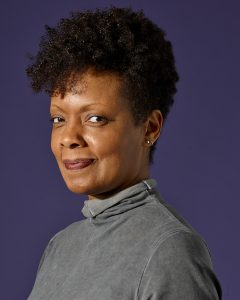
Lauren Hood
Born and raised in Detroit, Lauren Hood brings an authentic perspective to community engagement and development.
As Founding Director of Live6 Alliance, she helped launch a new nonprofit planning and development organization to enhance quality of life and economic opportunity in Northwest Detroit.
As Manager of Economic Development for the City of Highland Park, she directed the allocation of CDBG funds, housing rehab projects, demolition efforts and business attraction activities.
As Director of Community Engagement for Loveland Technologies, she built relationships nationally with social investors, real estate professionals and municipal governments to increase transparency, accountability and access to information for property ownership.
Passionate about the city’s cultural heritage, Hood has spoken and written extensively on Preserving Black Space. She currently serves on the City of Detroit Planning Commission and as an advisor to Detroit Sound Conservancy and Urban Consulate. She has previously served as a mayoral appointee of the Detroit Historic District Commission and board member for Preservation Detroit.
Through her consultancy Deep Dive Detroit, Hood conducts workshops and designs curricula on community engagement, equitable development and racial justice for civic, philanthropic and institutional clients. She also hosts popular Dinner & Dialogues for national conferences, including Meeting of the Minds and the Congress for the New Urbanism. Hood holds a Masters Degree in
Community Development from the University of Detroit Mercy. A voracious traveler, she has studied cities around the world—from Cairo, Egypt to Reykjavik, Iceland.

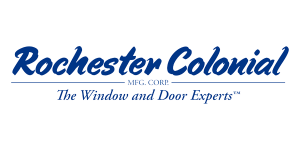
Thursday, December 3rd

The history of the historic preservation movement formally starts with Ann Pamela Cunningham in the mid-1800s, evolves with Jane Jacobs in the mid-1900s, and leads us to preservation today. Somewhere along this continuum of time historic preservation has become disconnected from being a social movement, it has become a movement that is associated with economic value and profit – not people. As we reflect and make the steps to create a more equitable movement (both in the profession and practice) we must reimagine preservation and rewrite the history of historic preservation. Workshop participants will learn about lesser recognized BIPOC preservationists who have influenced the movement and discuss lessons we could learn from their work in shaping our practice.
Participants will then be led in a facilitated discussion on how the preservation practice and profession could evolve, and share stories of people who have influenced preservation in our communities, while creating banners to advocate for themselves and be activists for change. You’ll be empowered to create protest banners to advocate for forgotten advocates of the built environment’s past, express why people should care about preservation today, be a rally cry for a shift someone wants to see in preservation, or something else entirely.
After the workshop participants will be encouraged to share a photo of their banner for a virtual “parade.”
Materials: Each participant will be mailed a pre-hemmed banner (with hanging loops), felt, selection of iron-ons, a glue pen, a needle, and a skein of embroidery floss. + you’ll receive a digital stencil pack. Participants will get to select in advance their banner from a variety of colors and patterns.
Skill level: This workshop is all creative/craft skill level accessible.
 Collecting Junior Ranger badges from National Park Service sites as a youth developed my appreciation for past and sense of place. I work to improve the movement’s accessibility by empowering the next generation of community advocates and increasing representation of lesser known histories.
Collecting Junior Ranger badges from National Park Service sites as a youth developed my appreciation for past and sense of place. I work to improve the movement’s accessibility by empowering the next generation of community advocates and increasing representation of lesser known histories.
With 10-years of experience working in the cultural resources field, I have developed a keen understanding of storytelling and connecting people to the past. I have crafted hands-on workshops, tours, successfully pursued historic designations, and executed speciality research projects.
In 2018, I was recognized by the National Trust for Historic Preservation as the recipient of the American Express Aspire Award during the 2018 National Preservation Awards and as an honoree of the inaugural 40 Under 40: People Saving Place’s list.
My work has been featured in Curbed, Traditional Building Magazine, and the National Parks Service’s LGBTQ America Theme Study, amongst other publications and podcasts.
